Examples of Photographic Stories with a Single Photo
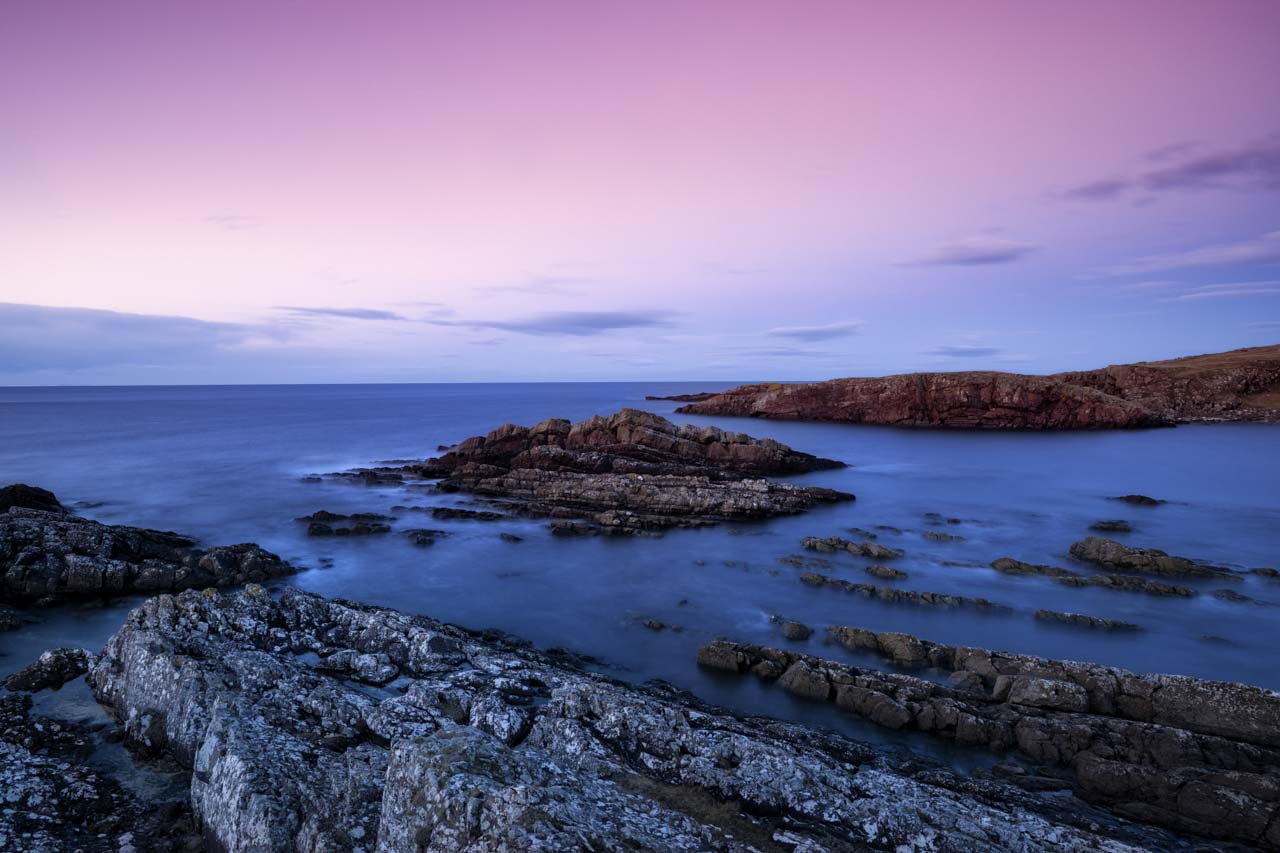
A Landscape Photo: Castle Valley in Utah
Still on the topic of a single photo to tell a story, here's another example with a landscape photo.
I chose a photo of Castle Valley. It's an arid desert in the state of Utah in the USA. Few people know about it because it's not a national park or a national monument. Just a desert area with buttes and impressive monolithic formations.
I go there regularly because it's one of the places that best represents the American Southwest.
During one of my stays, I had a cloudy, dramatic, terrifying sky. I chose to show my personality through this mound. Despite the adversity and pitfalls of my life, I keep moving forward. I've created a solid foundation on which to build. It's the basis of mineral formation.
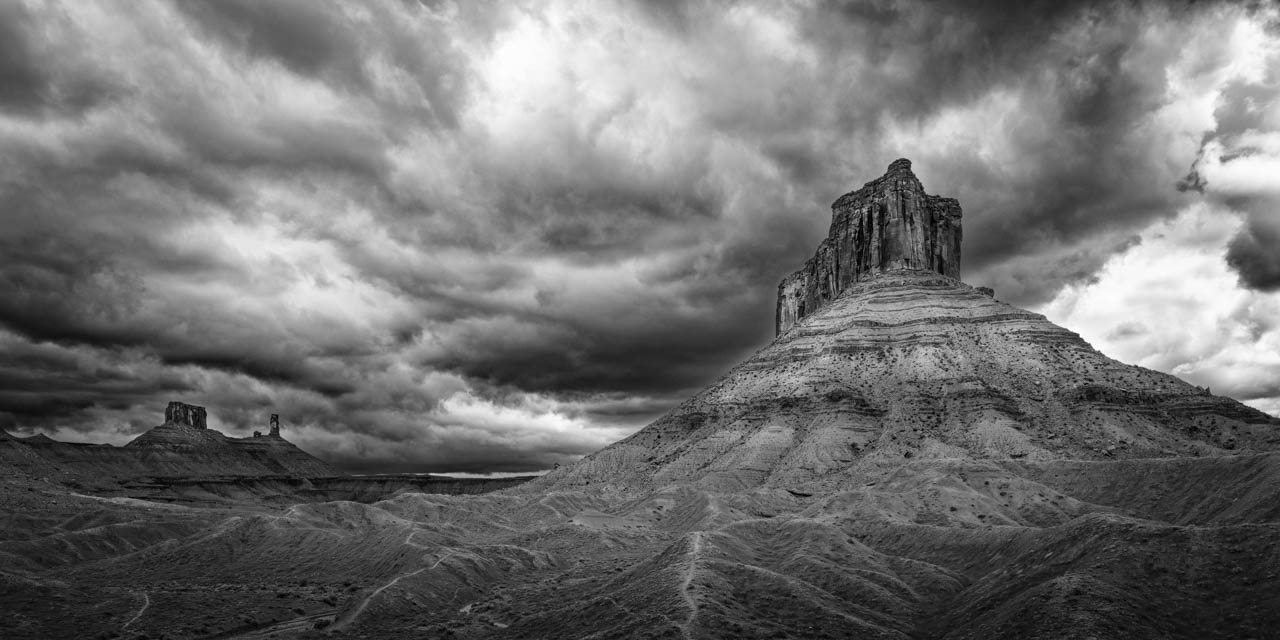
The top always seeks to go further in knowledge to better share. The sky represents the obstacles and pitfalls I have to face. The guide is not apparent in the photo. The paths around the bat show the journeys I've made. On these roads, I have met many people who have accompanied and helped me.
Once again, this is a photo that appeals to the emotions. It's suggestive.
I could multiply the examples, but the aim of this blog is not to explore every possibility. Its purpose is to enlighten you, to give you avenues to explore, so that you in turn can find inspiration. I'm just a guide. The rest is up to you.
The universe of a story in a single photo is what we call the decor, the mood, the atmosphere, the negative space.
In photography, the photographic element that characterizes the universe is negative space. It's the case that will support and highlight your main subject, also known as the main photographic element.
The world of your photo must be identifiable by the viewer. A world can be luminous, gloomy, mysterious, bewitching, and so on.
The rendering of the universe is given by light. That's why you need to choose the right light.
In a world, you'll find reinforcing elements to help you understand the subject. Each element has its own photographic attributes.
You need to choose them carefully to make your photo credible.
The universe doesn't have to be real. For example, I create a lot of photos in black and white. And yet nature is colorful.
The important thing, as always, is to suggest something to the viewer. His mind and emotions will do the rest.
Never forget that even if photography is a means of expression, you're also creating photos for others.
When you choose a world, which we can call a setting, you can use photographic language such as lines, shapes, figures, colors, tones, tonality and so on. These are the elements that will set the mood.
A Wildlife Photo: a Red Deer Stag Bugling
Let's take the example of a photo. It's of a deer bellowing in the mist of an autumn morning.
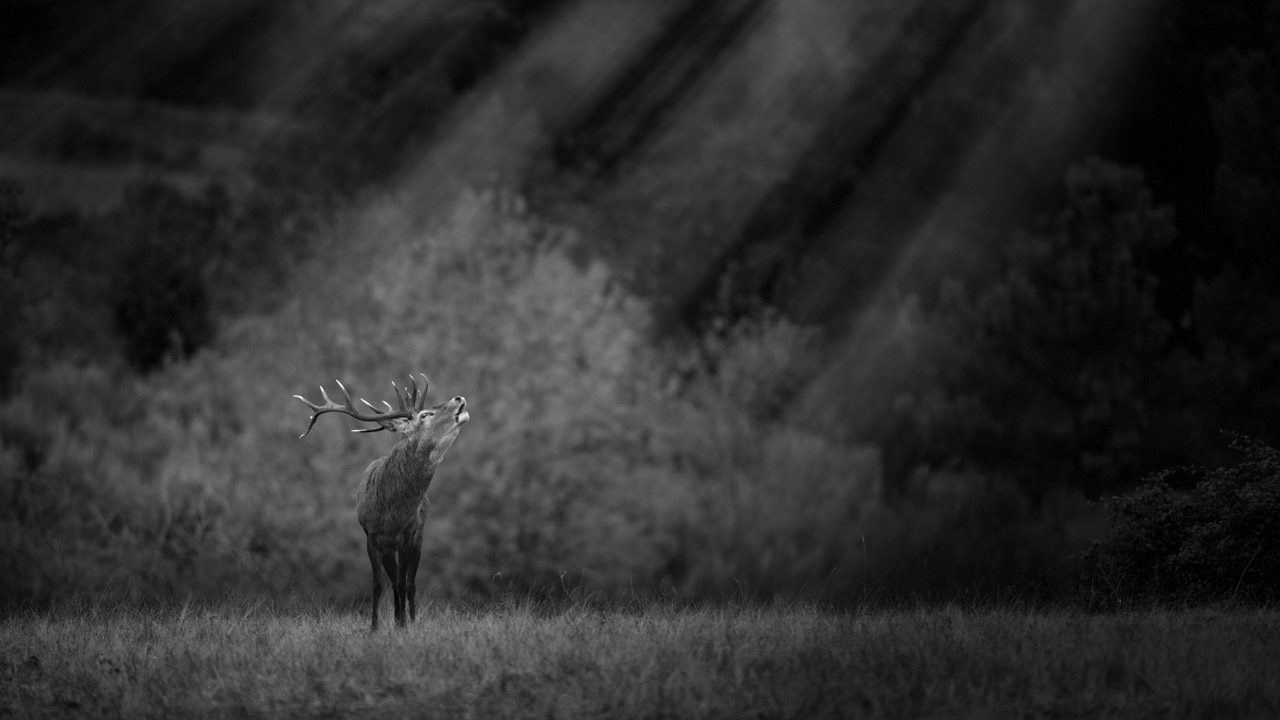
The character is identifiable; it's the deer.
In this photo, I wanted to show grace, elegance, power, but above all solitude and the effects it can have on the human beings who experience it.
I chose a fairly low, grazing light. The tone of the photo is dark. The universe I've created is closed. It's hard to escape. It's solitude.
Now we need to analyze how to add an event.
Let me remind you that we're still in the business of telling a story with a single character.
The event is what allows the viewer to really get into the story, because it's the event that's going to push the main character into action.
With a single photo, creating an event means photographing an unusual phenomenon or action. In a wildlife photo, it might be a fight between 2 animals. It could be a tender scene between an adult and his offspring.
In a landscape scene, this might be a lone tree in the middle of a desert area.
Even if this event is not visible in the photo, it should suggest to the viewer that something has happened or is happening.
If you have several photos, it's easier, because the event will be palpable through the images.
Let me take a concrete example with a scene that, on the face of it, isn't designed to tell a story.
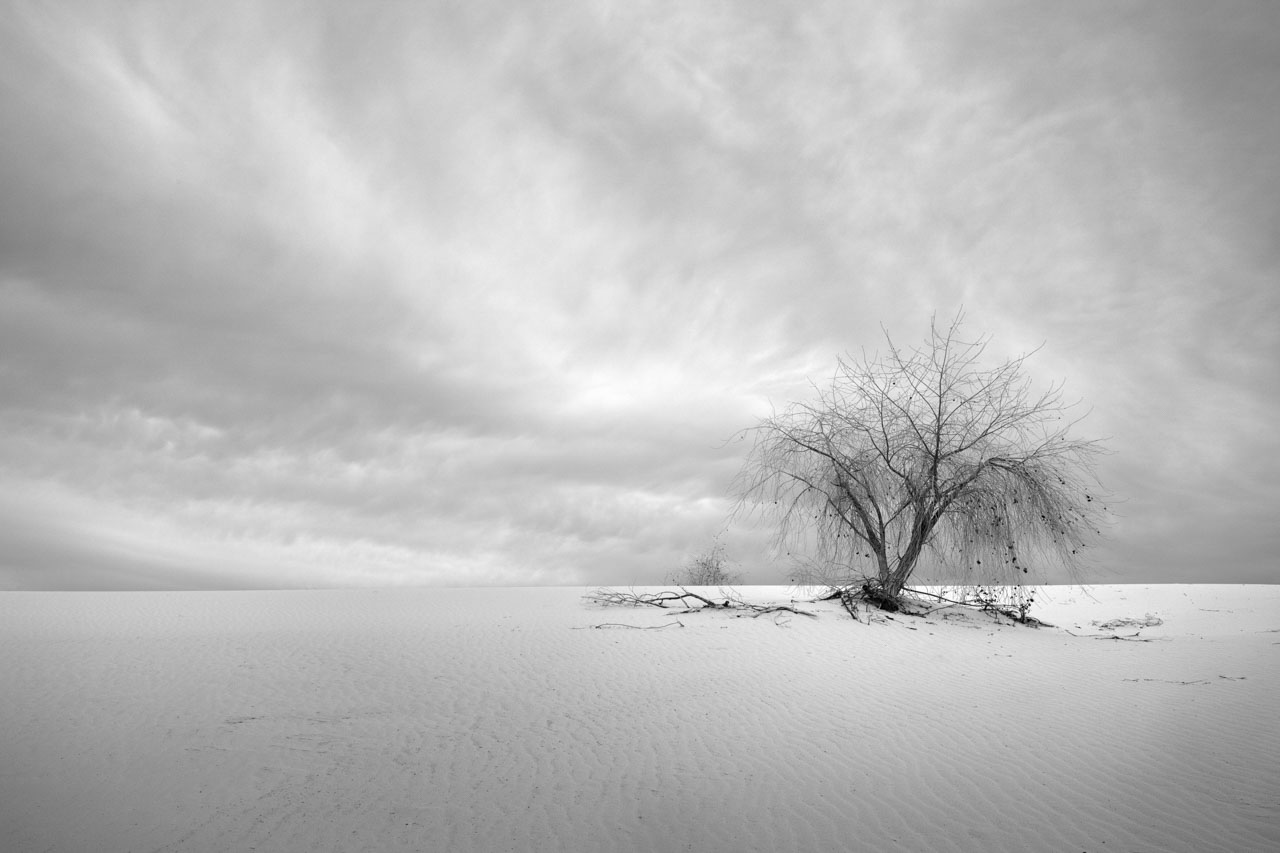
This photo was taken in a gypsum desert. It's part of the "Survive" collection, in which I evoke the fact that despite adversity and obstacles, we must move forward, adapt and evolve. That's what's so special about the human species.
In this photo, the tree is the main subject. It's leafless, but very much alive. It's surrounded by desert.
The event I'm evoking here is drought and aridity. Once a viewer has read the name of the collection and the art photo, he will mentally identify the subject, the universe and the event. They begin to tell themselves a story.
To evoke action and adventure in a single photo, you need to appeal to the viewer's imagination.
There are the twists and turns and pitfalls the hero encounters that make the story so interesting.
When you're creating a series of photos, it's easy enough to highlight one event per image.
Appealing to the Viewer's Emotions
With a single photo, it becomes more complicated.
Once again, you need to appeal to the viewer's emotions. You need to suggest an attitude, a position, a mood. His imagination will do the rest. Let me take an example to illustrate what I've just written. Let's take the example of a fawn.
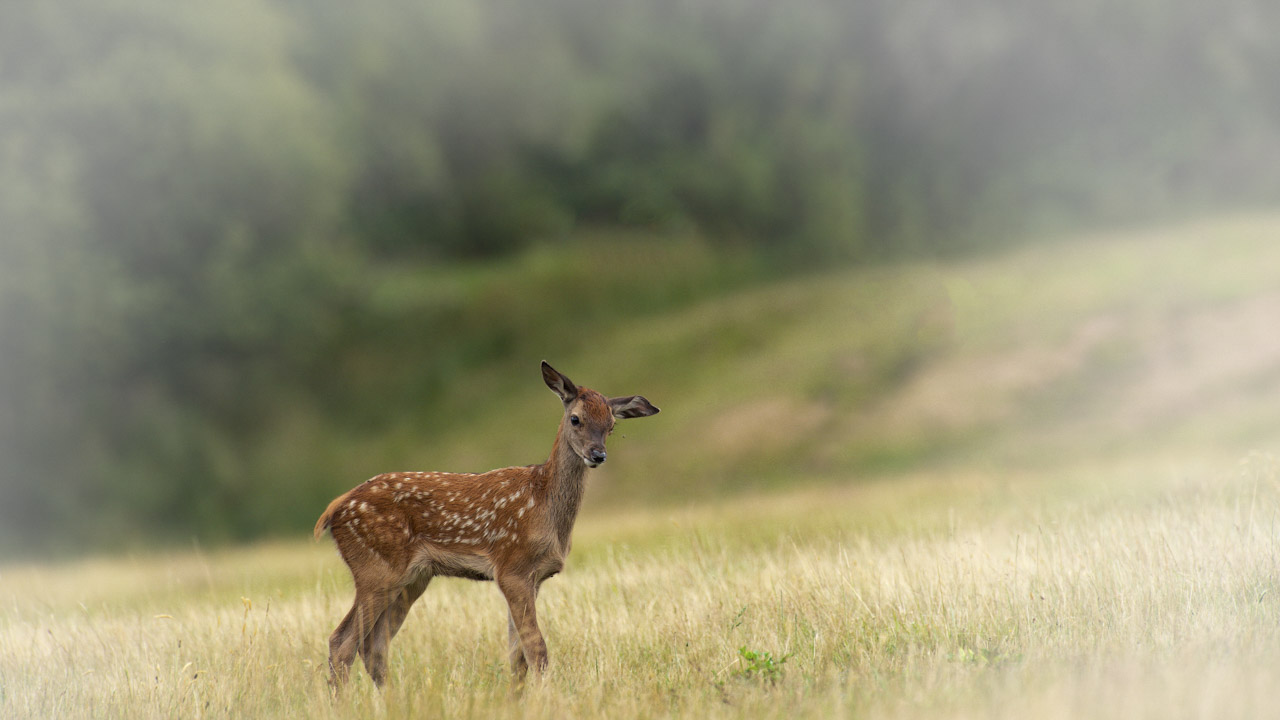
It's always the same story: he wants to grow up, to emancipate himself. In this scene, he's walking through a meadow. He's discovering the world. He's curious about everything around him. The action in this scene is shown through his curious, inquisitive gaze on a flower. Is he looking at the flower? Or the insects? His pricked ears accentuate his curiosity.
Just one photo. The viewer puts his or her imagination to work. If you create landscape photos, the principle is the same. It's the natural elements that set the tempo for the action.
The final point we'll address in telling a story with a single photo is resolution. Every good story has a resolution.
With a single photo, it's not easy because you have to integrate the action and the resolution. If you only show the resolution of the story, you won't capture the viewer's attention.
Ideally, action is preferred to resolution.
Take the viewer's imagination as your starting point for resolution. It's by constructing your photos that you'll appeal to their senses and emotions. I'll explain how to do this in future blog posts.
At this stage of the article, I think you've understood what a story is and how to tell it with one or more photos.
You've understood that the main character has goals. He's looking for a guide who can give him a plan of action to get past the pitfalls in his path and achieve his goals.
To set up a story properly, there are techniques based on 4 concepts: storytelling, copywriting, scripting and narration. Here's a look at what these techniques are and how you can use them to tell compelling stories. In this way, you'll give your photos added impact.


Add comment